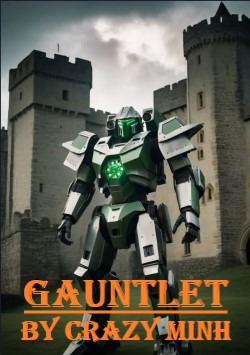
A ancient bipedal weapons system from the Golden Age of Prosperity. Originally numbering at 120 known units, each Destrier is unique, although the reason for the disparity in their designs is unknown. A Destrier is about 12-18ft tall, although most sit at roughly 16ft. The technology to build or perform major repairs to them has been lost over the centuries, although they can be repaired if damaged up to a point. They are powered by a advanced form of fusion reactor, which is fueled by deuterium, or heavy water. The only group who have the knowledge and expertise to repair the Destriers are the Smith's Guild, who leverage this for greater political and social standing with the Destrier Knights. Destriers are operated via a neural bond between a pilot and the machine that, once established, cannot be overridden until the pilot has either died or the Destrier has rejected the pilot. This neural link also requires a specific gene that is unique to the bloodlines of the Destrier Knights, although some other noble families who were either once in possession of a Destrier, or who had a Destrier Knight in their family tree, have descendants who can operate the machines. The presence of the Destriers, and the lack of anything that can seriously contend with them, has allowed the feudal system to remain in place for over twenty centuries.
The technology of the Kingdom of Avalan is the most advanced in the world, thanks to the Smith's Guild, a close-knit organisation of engineers, scholars, and artificers who safeguard the remaining knowledge from the Golden Age. The legacy knowledge preserved by the Guild has allowed for the kingdom to obtain a level of technology roughly equivelant to early 20th century Europe. Guns and artillery have reached the point where primitive automatic weaponry is issued to the military, and Destriers often carry a 25mm reciprocating cannon on their right shoulder. While Destriers are rarely deployed in actual battle due to their value and difficulty of repair, mass-production imitations known as Cataphracts do exist, and are used by armoured calvary in various conflicts. Cataphracts, and other bipedal vehicles inspired by the Destriers (such as mechanised agricultural vehicles and industrial loaders) are powered by diesel engines, and have primitive electrical systems. Most large urban settlements also have luxuries such as electric lighting and running water, and primitive radio communication is being developed for use by the military. Motorised vehicles are also becoming more common in the cities and amongst the rich and powerfull. However, computers, full industrial automation, wireless networking, data communications, broad-spectrum antibiotics, powered heavier-than-air flight, advanced materials science, and other technologies of the 20th and 21st century have not found their way into existence.
A Destrier Knight is a noble who possesses the gene that allows the operation of the ancient war machines known as Destriers. Only 48 families currently possess a Destrier, due to the loss of more than half of the machines during the two succession wars. These families are the most powerful of the various noble families, and therefore hold the most political power. The most prominant Destrier Knight bloodline, the Drakeblood family, are the current royal family after taking the throne at the end of the First Succession War. The current king is High Lord Martin Drakeblood II, and his heir is Prince Ambrose Drakeblood, who is currently six. Destrier Knights, in return for maintaining peace within their lands for the King, and being prepared to assist in the war effort, control their lands and rule them as they see fit.
- Chapter TwoJan 13, 2024
- Chapter OneJan 13, 2024
- 22 reading
- 8 plan to read
- 0 completed
- 2 paused
- 0 dropped




